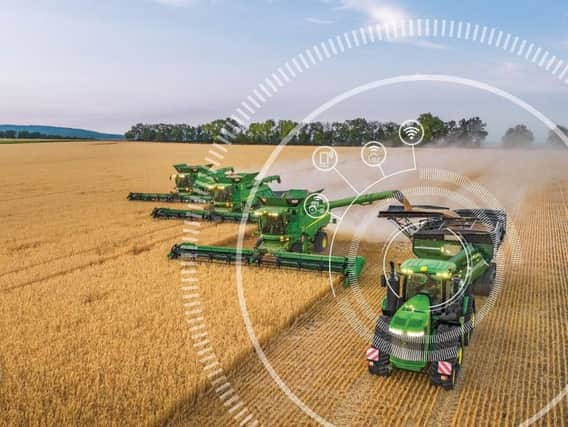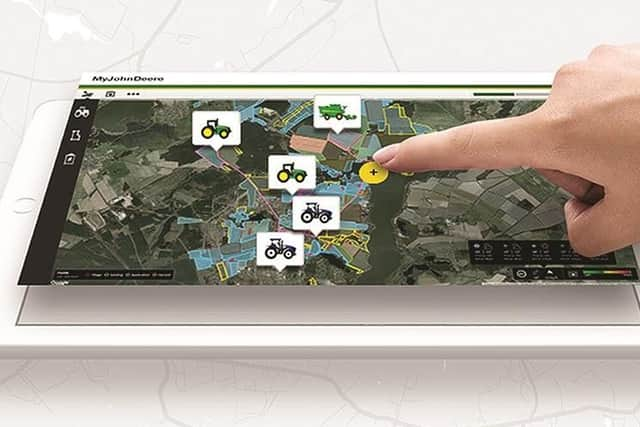Is your food business at risk of being disrupted by an online platform?


Online businesses such as Amazon, Airbnb, and Uber are part of our everyday lives and a big part of the global economy in terms of consumer spend and stock market value.
These businesses have grown rapidly by attracting millions of users and thousands of suppliers to provide goods or services to the users. This type of business is known as a “platform”.
A platform is an online business that facilitates a transaction between two third parties.


The platform provides the marketplace and functionality to perform the trade but does not own the inventory or assets involved.
For example, Uber is the world’s largest taxi platform but owns no taxis; Airbnb is the largest hospitality platform but owns no hotels; Alibaba is the largest merchant platform but has no stock.
At AAB Consulting, we have seen platforms upturn conventional business wisdom: rather than build assets, acquire customers and sell them things the company makes, platforms attract buyers and third-party sellers of goods and services, facilitate transactions between them on the platform and monetise the activity either through fees for advertising or sales commission.
The key to a platform’s success is “network effect” – a virtuous growth cycle where more suppliers attract more buyers, which in turn attracts more suppliers and so on.
As a result, the platform develops scale and power. This can result in suppliers becoming dependent on the platform unless they have a high level of independent differentiation and customer loyalty.
The platform gains further advantage by collecting data on transactions that enable it to introduce new user services such as product recommendations, and new supplier services like dynamic pricing (for example Uber’s “surge prices”) that further incentivise the use of the platform by both sides.
Platforms increase choice for consumers by introducing new supply to the market that did not exist before, like Uber drivers and Airbnb hosts. The platform disrupts conventional advantages based on local captive market or lack of price visibility.
There are several levels of platforms:
- Level 1 platforms are e-commerce marketplaces similar to consumer websites like eBay. Participation involves listing goods for sale. There is limited technology integration with the third-party suppliers.
- Level 2 platforms link supply and demand for specific services, for example, the sharing of agricultural machinery. The platform provides visibility and quality assurance.
- Level 3 platforms are true “big data” platforms involving third-party applications running on the platform. For example, MyJohnDeere collects data via sensors on John Deere equipment and integrates with other agriculture software applications. As a result, the platform develops intelligence about farm operations that can be used to reduce costs and improve yield.
Platforms are emerging in many sectors of the food and drink industry, including:
- Agronomex is an online fruit and veg platform. Pricing is by auction or fixed price using a “buy now” feature.
- Sellmylivestock has more than 20,000 registered UK farmers. It offers sales of cattle, pigs and sheep for breeding, growing or store.
- Graindex trades grain including wheat, oats, barley, peas, beans and oilseed rape. Trading is both futures and ex-farm.
- Procsea is a fish trading platform. Information on fishing zones, ports, techniques and quality is displayed for each listing. Procsea arranges collection, customs and delivery through approved transporters.
- Yumbles and Yumbles Trade are for artisan food and drink. They offer independent small-batch artisan producers opportunities to sell direct to consumer or to retailers and restaurants.
- Farm-r is a platform for farm machinery sharing, enabling farmers to rent their equipment to other farmers when it is idle.
- FarmPay is a farmer-to-farmer payment platform for livestock trading. It uses escrow accounts to hold payment securely until buyers and sellers complete the transaction. FarmPay aims to become a full supply chain management platform using “big data” to tackle inefficiencies in livestock chains and improve market signal from consumer all the way back to breeder and finisher.
There are implications for food and drink businesses and these include:
- Platforms offer a new route to market and an opportunity to increase sales. However, as with any distribution channel, there is a price to pay in the form of listing fees and platform commissions that can reduce profit margin, not to mention the running costs of maintaining presence on the platform.
- Platforms offer an alternative to traditional intermediaries such as wholesalers and physical auction markets. The commercial activities of most producers are designed around these channels and relationships, so moving to a platform requires new processes and skills, such as online marketing, to use the new channel effectively.
- If most sales are on one platform, there is a risk of platform dependence where small changes to trading rules, commission levels or algorithms can result in big and sudden changes to volumes and margins. It pays to spread business across more than one platform and maintain traditional channels.
- Maintaining strong product differentiation and brand is also key to ensuring a balance of power between platform and supplier. Scotland Food & Drink has placed product quality and branding at the heart of its industry growth strategy and this will become even more important as trade moves onto platforms.
Platforms provide new digital tools for practices that have always existed in the industry, such as sharing equipment, selling goods at auction and advertising. The benefit of platforms is that they open up capacity beyond the local market, and can lead to much more efficient supply chains using big data.
At the same time, Scottish food and drink businesses must consider the risk of being disrupted by platforms and develop platform innovation and participation strategies to manage this risk, including establishing platforms of their own, pricing and data policies, and ongoing product differentiation and brand strategies to prevent commoditisation.
Brian Mooney is a director at Anderson Anderson & Brown Consulting.
Scottish Seafood activity
Scotland Food & Drink Ambition 2030 aims to double the value of the industry to £30 billion by 2030 and the seafood sector has a key part to play in delivering that growth, writes Derek Mair.
The Scottish seafood sector is enjoying a period of sustained growth and as a result we have experienced an increase in merger and acquisition activity and investment from overseas players looking to establish a presence in Scotland.
Examples of this are the £98.4 million acquisition of Macduff Shellfish Group, one of Europe’s leading wild caught shellfish processors, by Canadian business Clearwater Seafoods and Estonian-based PR Foods’ £13m acquisition of John Ross Jr, a traditional smoked salmon business.
Despite the political and economic uncertainty that Brexit brings, we believe this trend will continue as overseas investors look to secure future supply of premium Scottish seafood.
If you are considering selling your business, here are some tips to ensure a successful outcome:
- Engage professional advisers – those who know the sector can maximise value through creating competitive tension and allowing the management team to focus on running the business.
- Do your diligence on the purchaser – it is important to get comfort on the buyer’s ability to deliver what it says it will.
- Ensure information provided is accurate – the buyer will use the information provided as a basis for its offer.
- Don’t succumb to the purchaser’s charm – it is important to maintain an
arm’s-length relationship with the buyer until the deal has completed.
n Deal with potential problems early – it can be too easy to ignore them and hope they go away rather than deal with them as they arise.
- Consider the most efficient tax structure – most buyers are flexible when structuring a deal to ensure that the vendor can take advantage of any tax benefits.
- Avoid deal fatigue – to ensure that the transaction is completed within a reasonable timescale, ask the purchaser to produce a timetable detailing all key stages of the process up to completion.
Derek Mair is partner and head of food and drink at AAB.Crowdfunding: is it lunacy?
Stand: Alistair Duncan on how to avoid the pitfalls of aiming for the Moon
Copy: When looking to grow in line with Scotland Food & Drink’s ambitious “£30 billion by 2030” vision, crowdfunding is fast becoming the go-to solution for Scottish food and drink businesses.
As well as producers, even restaurants and bars are getting into the crowdfunding game, raising funds for expansions or refurbishments in return for merchandise and future meals.
With some food and drink businesses being less attractive for traditional investors, crowdfunding is seen as a lower risk option.
And following BrewDog’s success, surely there is no downside?
That was what Lunar Missions thought. It launched a crowdfunding appeal for £600,000 to send a robot to drill into the surface of the Moon to collect scientific
data.
In return for a minimum payment of £60, the investor received the promise of digital or physical space in a time capsule that was to be buried on the Moon.
The physical space was enough to include a strand of hair and the digital space could be used to upload photographs or recordings.
HM Revenue and Customs argued that the payments received were liable to VAT, resulting in Lunar Missions having a liability to register and account for the VAT on the pledges.
In Lunar Missions Limited v HMRC [2018] TC06286, the first-tier tribunal dismissed Lunar Mission’s appeal and found that VAT was due on payment of the pledge.
Although the principles in Lunar Missions were unusual, these also apply to food and drink crowdfunding appeals.
If the investor receives something tangible – for example, the promise of a presentation bottle of the first run of a new spirit, attendance at a “tasting experience” at a restaurant or simply a discount card for a bar – this will be a supply for VAT purposes and VAT will be due when you receive payment.
However, if the investor is offered a choice of rewards for their pledge, this may qualify as the issue of a multi-purpose voucher, with VAT only being due on redemption of the voucher.
Furthermore, pledges where nothing more tangible than a regular update on the project or acknowledgment of the pledge is received can be treated as donations.
In my opinion, there are clearly many issues to consider when looking at crowdfunding and, given the experience of Lunar Missions, it is important that VAT is not forgotten.
Alistair Duncan is indirect tax director at AAB.
For more information, visit www.aab.co.uk
This article is taken from The Scotsman's Annual Food & Drink Supplement which can be read in full here.